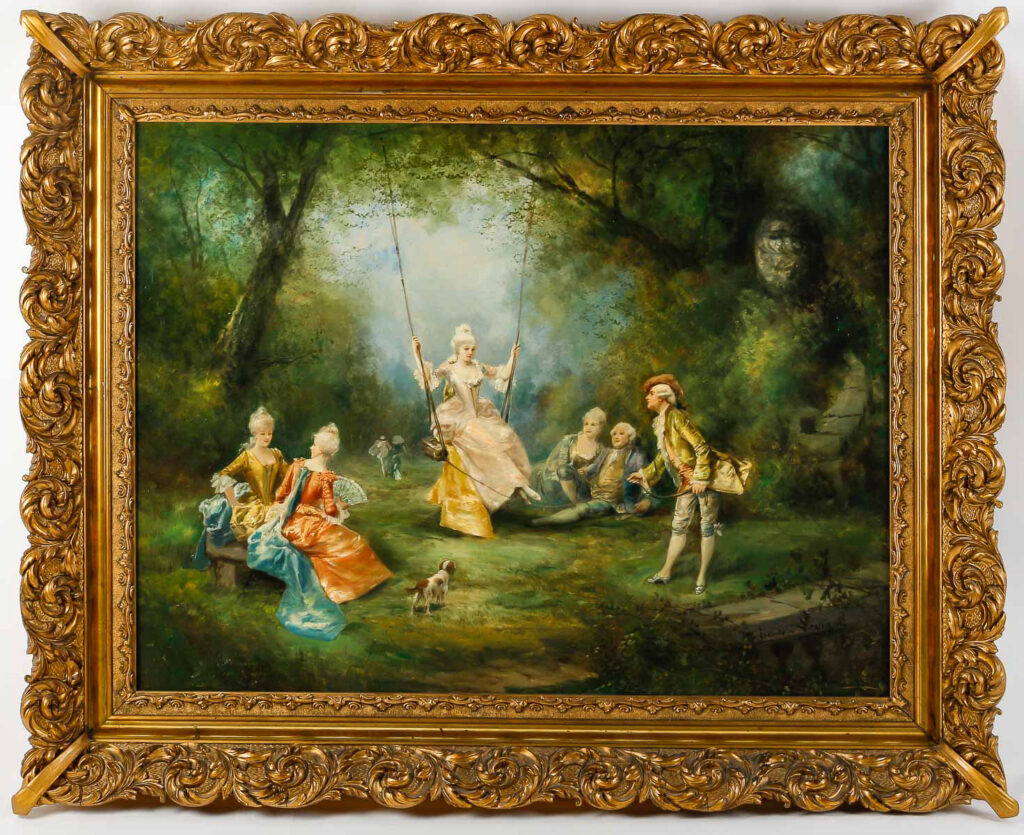Théodore Levigne – L’escarpolette ou Badineries champêtres huile sur toile vers 1880-1890
Théodore Levigne likes to draw inspiration from the emblematic painters of the 17th and 18th centuries, such as Fragonard and Watteau. The escarpolette or swing in art is a recurring theme. This object allows for imaginative compositions, is highly graphic, and can be used to explore new points of view. Set in a landscape, the swing adds graphic elements that are often at the origin of the painting's composition. The ropes of the swing define either oblique or vertical axes, which are exploited by artists.
A fine composition in this scene of country banter, where a gallant woman takes advantage of the undergrowth to swing on a swing, while her entourage chats and contemplates.
Magnificent oil on canvas signed lower right in the decor, presented in a handsome carved wood and gilded stucco frame that serves the painting perfectly.
Dimension sans cadre : Hauteur 70 cm – Longueur 92 cm.
Dimensions avec cadre : Hauteur 95 cm – Longueur 107 cm.
In fine original condition.
Provenance: Château de Busset - Bourbon Busset family.
Biography:
Théodore Levigne : 17 novembre 1848 à Noirétable – 11 novembre 1912 à Lyon.
French painter of the 19th and 20th centuries.
Lyon School.
Théodore Levigne is a curious and observant boy. He was attracted to painting and drawing from an early age. He entered the School of Fine Arts in Lyon at the age of twelve. He received awards in his first year.
He was a student of Gérôme, one of the most famous artists of his time, and of Alexandre Cabanel, a great academic painter.
His journeys to Marseille, Sicily, and Italy allowed him to enrich his experience.
He excelled in all pictorial genres: landscapes, genre scenes, portraits, still lifes, and historical and military representations.
Museums: Tournus, Chambéry, Nice, Rumilly, Nuits Saint-Georges.




